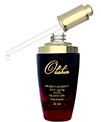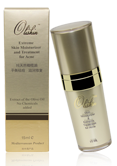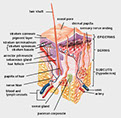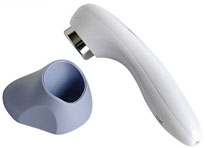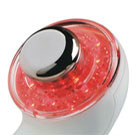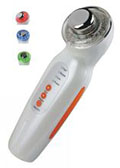Skin Care Products
Frequently Asked Questions

Customer Service
- Customer Service
- Authorized Sales
- Distributors
- Marketing
- Certifications

The Skin
Get to know the skin
The Skin
The skin has a very intricate microanatomical structure. In addition to thousands of skin cells, within one square inch of skin, 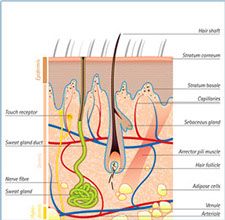 varying from 0.04 inches (1 mm) to 0.16 inches (4 mm) in thickness, there are some 650 sweat glands, 65 hair follicles, 19 yards of capillaries, 78 yards of nerves, thousands of nerve endings, Merkel cells for sensory perception, and Langerhans cells for immunological protection. The skin also contains melanocyte cells responsible for producing the melanin that gives the skin its color and pigmentation spots, or freckles. For a solid visual understanding, draw a one-inch square and attempt to make 650 dots representing the sweat pores in the square. Then take a spool of thread, measure 19 yards, and place it within the square. If you are having a hard time with 650 dots and 19 yards of thread, imagine trying to add 1,300 nerve endings and 78 yards of nerves! All of this is found in one square inch of skin, about as thick as a few stacked sheets of paper.
varying from 0.04 inches (1 mm) to 0.16 inches (4 mm) in thickness, there are some 650 sweat glands, 65 hair follicles, 19 yards of capillaries, 78 yards of nerves, thousands of nerve endings, Merkel cells for sensory perception, and Langerhans cells for immunological protection. The skin also contains melanocyte cells responsible for producing the melanin that gives the skin its color and pigmentation spots, or freckles. For a solid visual understanding, draw a one-inch square and attempt to make 650 dots representing the sweat pores in the square. Then take a spool of thread, measure 19 yards, and place it within the square. If you are having a hard time with 650 dots and 19 yards of thread, imagine trying to add 1,300 nerve endings and 78 yards of nerves! All of this is found in one square inch of skin, about as thick as a few stacked sheets of paper.
As the body’s largest organ, the skin performs a series of key functions resulting from multiple chemical and physical reactions that take place within it. The skin is a barrier, protecting the body from the elements, injury, and oxidation. It helps maintain a constant body temperature by helping the body adapt to different ambient temperatures and atmospheric conditions through the regulation of moisture loss. It gathers sensory information and plays an active role in the immune system, protecting from dis- ease. In order to play all of these functions—protective, metabolic, sensory, and immunological—the skin must maintain its own auto-repairing capacities and functional integrity.
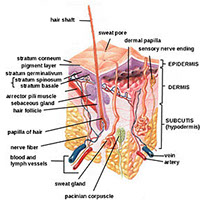 The Anatomy of Skin
The Anatomy of Skin
Skin sometimes looks like a single sheet of flesh, but really it comprises many different layers. They’re categorized into three main types, as follows.
The epidermis is the outer layer, and its job is to be the primary ‘bodyguard’ of the skin team. It stops pollutants, the sun, and other harmful elements getting to the more delicate layers of skin underneath. It also converts sunlight into vitamin D.
In addition, it stops your body losing too much of its water content, and that’s pretty important, because if it ends up below 10% your skin becomes brittle, dry, and vulnerable to infection and damage.
The next layer down is the dermis, the secondary ‘bodyguard’ within the skin and the one that gives it most of its color, scent and oil content. In addition, it carries nutrients and oxygen in blood capillaries to the epidermis, and removes waste products from it.
The dermis is the part of the skin that helps most with the regulation of body temperature, through sweating and blood flow. Just as importantly, perhaps, it keeps us safe by giving us a large proportion of our sense of touch.
The dermis also stops bumps and minor wounds from penetrating to the tissues underneath, by using a tough protein called collagen, along with elastic tissue and reticular fibers.
These give the skin strength and flexibility, while enabling it to help keep the internal organs safely in place.
The next layer down is the hypodermis, or subcutaneous layer – the one hidden from view beneath the others. It has a more internal role in the body, providing a network of blood vessels and offering shock absorption, energy storage, insulation and the ability of skin to slide over joints.
Protecting Your Skin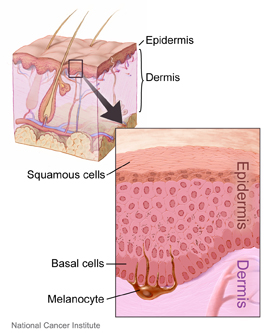
With such an important role to play in keeping the body nourished and protected, your skin really is a vital resource for your health, and it pays to put in a bit of effort in to your skin care to help it out.
Ultraviolet light is necessary in small quantities, for the skin to be able to make vitamin D. But too much sun can kill you.
In Australia, skin cancer accounts for around 81% of all new cancers diagnosed each year.
Over 382,000 people are treated for it, and over 1400 die. Even in the cloudy UK, the more serious form of skin cancer accounts for almost three per cent of all newly diagnosed cancers each year. Everyone is at risk from getting skin cancer, regardless of the color of their skin. Skin care in this regard is critical - a matter of life and death.
Even without the cancer, sun ages skin rapidly. Having prematurely aged skin can wreak havoc with your skin care and beauty regime and make you seem old beyond your years.
As we age, or if we suffer sun damage on our skin, it loses its ability to produce collagen and elastin so effectively, so loses some of its elasticity. It develops wrinkles, areas of uneven pigmentation and takes on a texture that’s ‘leathery’ or, ‘papery’ and delicate. That’s when ‘laughter lines’ start to seem a little less amusing. The best way to prevent these problems is to avoid over-exposure to the sun. Skin care does not just mean lotions and potions. It means spending time in the shade, especially during the hottest parts of the day; making sure you never burn; covering up with a t-shirt, hat and sun umbrellas; avoiding sunbeds; and taking particular care of children and their sun exposure.
Slap on a sunscreen with a factor 15 or higher, and consider using a titanium oxide sunblock on delicate parts of their bodies, especially faces.
After enjoying the sun, use a moisturizer. It’s also important to know your skin and keep an eye on moles – if you spot any changes in their appearance or sensation, see your doctor immediately.
Looking after yourself in the sun is one of the best things you can do for your skin care. But unfortunately, it will still change and degenerate as you age. Eventually, free radicals produced by pollution, intoxicants such as smoking, and the body’s normal metabolic processes, produce an oxidative stress on the body which it finds increasingly hard to repair. As a result, it becomes more prone to disease and decline, and the amount of nutrients its cells can absorb will also fall.
For a thorough insight about sun protection, sun’s ultraviolet radiation hazards, types and risk of skin cancer have a look at "the 1st Sun Protection Guide"
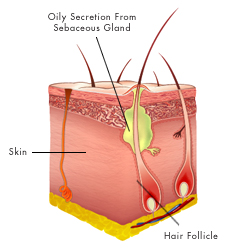 The Problems With Skin care Today
The Problems With Skin care Today
You may have noticed that skin care today is more complicated than it was for generations before. Simple beauty routines no longer have the same impact on the health of our skin, and you may be wondering why.
Of course, a lot of our perceived problems with trying to look good come from the advertising industry. The cosmetics and skincare giants are billion dollar concerns, and a great deal of hype is put out to make us buy products.
Some of them even contain substances which are bad for us. Prabens, for example, are used as preservatives in skin care cosmetics, but these chemicals have been found in breast cancer tumors.
Further tests are underway, but in the meantime, who wants to take the risk? They, and other substances, also need to be processed by the body and excreted, which puts unnecessary strain on the liver.
If you can, choose a skin care product with a self-preserving formula that doesn’t contain synthetic preservatives.
It is more important what you put in your body than on your skin
Much of our skin condition comes from what we eat. Food today is vastly different to the kind our ancestors ate, even as recently as 20 years ago. Chemical preservatives, steroids in meat, long storage periods, processing, and the poor quality of over-farmed soil are all to blame. Food that contains too much salt, sugar and hydrogenated or saturated fat, will play havoc with the quality and appearance of your skin.
What Can I Do To Help My Skin?
If you can, eat fresh, organic, locally-grown whole foods, including as many vegetables as possible, and preferably some fruit. Food that’s rich in antioxidants will reward you with healthier skin.
Drinking enough water is also vital for maintaining your health and good skin care, and 6-8 glasses day is a good general rule of thumb.
It’s a wise move to take a high quality nutritional supplement, too.
Do some research first, because many of the cheaper products are actually bad for your body, or simply don’t do what they promise. Fatty acids in the form of omega-3 (flax oil, for example) and fish oils help keep the skin nourished and lubricated. Antioxidants, especially vitamin C and E, will give a tremendous boost to your skin care, and help other parts of your body at the same time.
Finally, remember that ultimately, “you are what you eat” and especially when it comes to your skin.
Methods of skincare
There are two simple ways of skin care. These two ways are internal and external method.
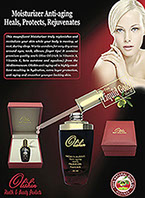 First method
First method
Internal method of skin care one has to pay attention about lifestyle, eating habits and regular exercises/yoga. Here at this website we have discussed general skin care precautions, tips and step by step procedure to maintain healthy and younger looking skin.
Second method
Applying of certain creams, masks or paste to the external layer of skin. Applying of skin care products depends upon the type of skin. Market is filled with various skin care products that make tall claims in advertising but most of the products do not fulfill what they claim. Most of the products are very costly and are chemicals based that have many side effects on your skin and body. On the other hand the home made recipes are safe, cheap and very effective in maintaining healthy skin and curing many skin related issues without any medicines. Above skincare tips are very important and basic requirement for maintaining healthy and achieving smooth and silky skin. Secret of skincare lies in regular and correct skincare regimen. Skin care also depends upon the types of skin as one skin care regimen does not suit all types of skin. First of all identify type of skin and select skincare regimen as per type of skin. Skincare recipes are also prepared as per type of skin as need of dry, normal, oily, sensitive and combination skin are different. Skin care program also changes as per change of season and age. In different seasons certain extra precautions and care are to be taken maintain healthy skin. In summer, rainy and winter season one has to adjust skin care regimen differently. Likewise in teen age there are hormonal changes in body as such for teen ager skin care regimen is different from adults.
You may also read:
⇪
Top

Bringing the Best to Everyone We Touch
and Being the Best in Everything We Do
Receive emails about new products, latest trends, and special offers
© Oliskin 2012 - 2014. All rights reserved. Terms of Use Privacy Policy


